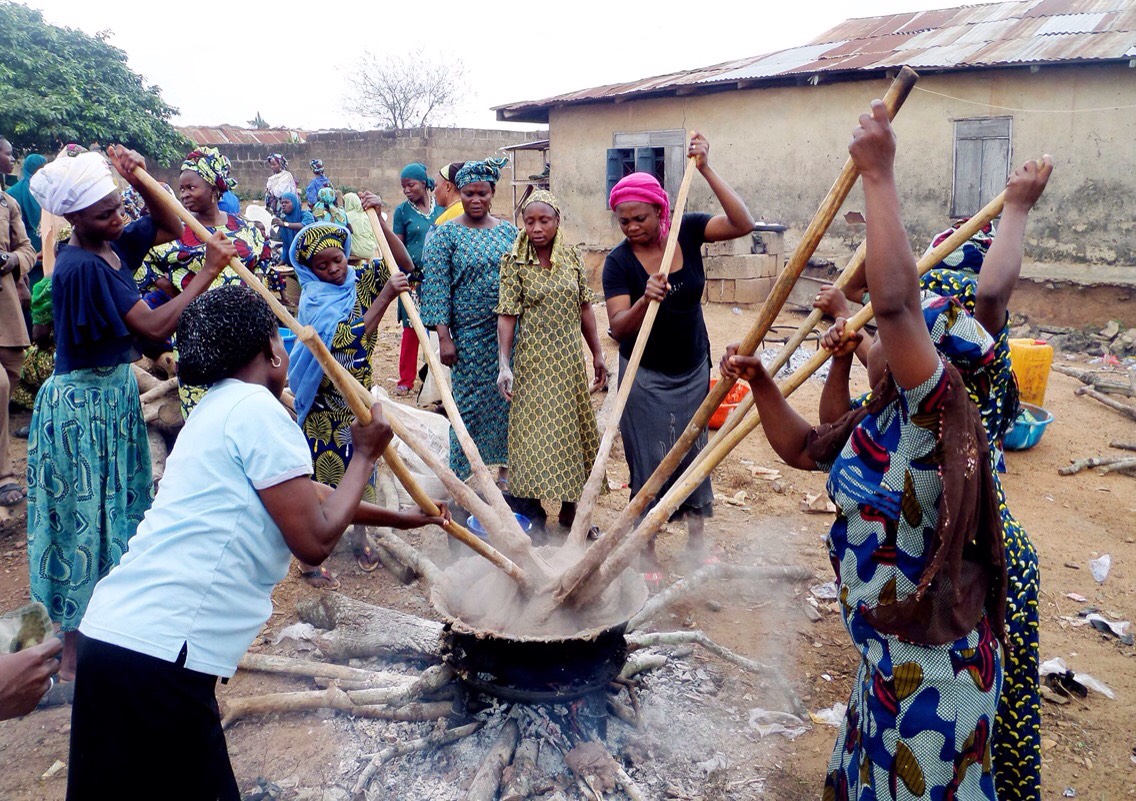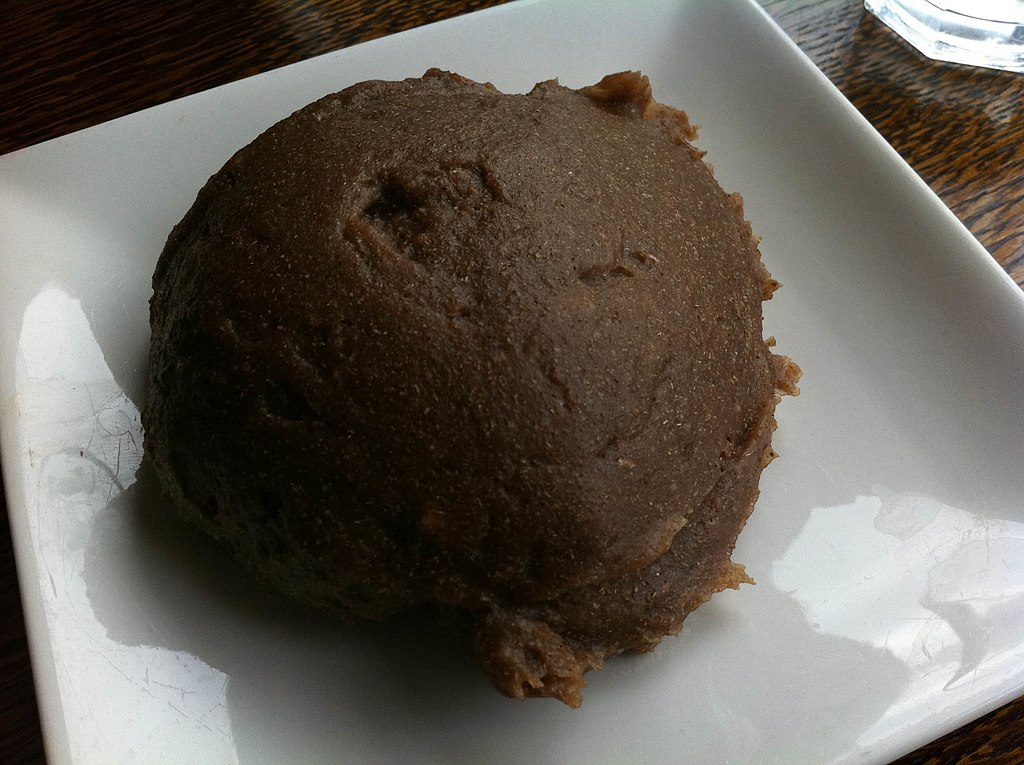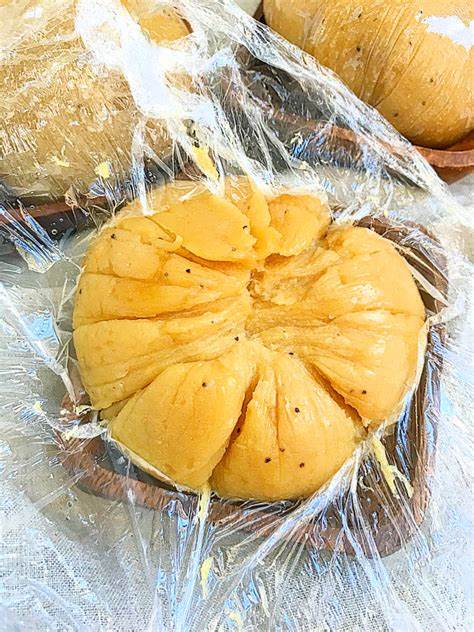
Communal preparation of Amala for an occassion in the South Western Nigeria. Here, a group of womwn are seen preparing Amala with a turner popularly called Orogun in Yoruba Land and big pot popularly called Ape on a local stove called adoogan which is a three leg stand for preparing the firewood.


